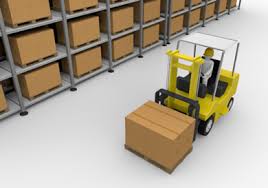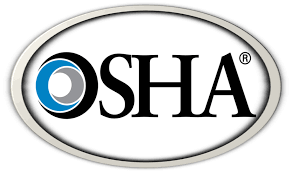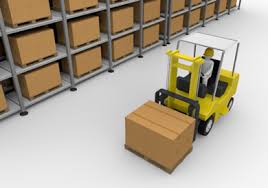Title Page
-
Document No.
-
Audit Title 3.5 Internal audit clause 3.5.4
-
Conducted on
-
Prepared by
-
2.1 Hazard and risk management team<br>A multidisciplinary hazard and risk management team shall be in place to develop and manage the hazard and risk management system and ensure the system is fully implemented and evaluated for its effectiveness.
-
2.1.1 The hazard analysis and risk management system shall be developed, reviewed and managed by a multidisciplinary team that includes those responsible for quality, technical, engineering/maintenance, production operations, and other relevant functions.<br>In the event that the site does not have the appropriate expertise in-house, external expertise may be used to analyze any hazards and risk of them occurring, and/or develop and review the hazard and risk management system. However, the day-to-day management of the system shall remain the responsibility of the site.
-
2.1.2 The multidisciplinary team shall have a designated team leader who shall be suitably trained and able to demonstrate competence and experience of hazard and risk analysis
-
2.1.3 The team shall be able to demonstrate competence in hazard and risk analysis principles and be kept up to date with factory changes and customer requirements as they occur.
-
2.2 Hazard analysis and risk assessment<br>A document hazard analysis and risk management (HARA) shall be in place to ensure that all hazards to product safety and legality are identified and appropriate controls established.
-
2.2.1 The scope of the hazard analysis and risk assessment shall be clearly defined and documented and shall cover all products and processes included within the intended scope of certification.
-
2.2.2 The HARA team shall maintain awareness of and take into account:<br>1) Historical, known and foreseeable product safety hazards associated with specific processes and raw materials<br>2) intended use of the product (where known)<br>3) known likely product defects that affect safety<br>4) relevant codes of practice or recognized guidelines 5) Legislative requirements
-
2.2.3 A full description of the product,product group, and process shall be developed, which includes all relevant information on product safety and integrity. As a guide this shall include:<br>1) Composition(e.g. raw materials, inks, varnishes, coatings, and other print chemicals)<br>2) Origin of raw materials, including use of recycled materials<br>3) Intended use of the packaging materials and defined restrictions on use; for example, direct contact with food or other hygiene-sensitive products, or the physical or chemical conditions.
-
2.2.4 The process flow diagram prepared for each product, product group and process shall set out each process step from the receipt of raw materials, through manufacture and storage, to dispatch to the customer. As a guide this shall include, where applicable: 1)receipt and approval of artwork and specification. <br>2) receipt and preparation of raw materials such as additives, inks and adhesives. 3) each manufacturing process step. 4) in-line testing or measuring equipment. 5) the use of rework and post-consumer recycled materials. <br>6) any subcontracted processes. 7) Customer returns.
-
2.2.5 The accuracy of the process flow diagram shall be verified by the HARA team at least once per year and following any significant incidents or process changes.
-
2.2.6 The HARA team shall identify and record all potential product safety hazards that are reasonably expected to occur at each step in relation to the product and process. The hazards considered shall include, where relevant:<br>1) Microbiological hazards<br>2) chemical contamination(e.g. taint, odor, allergen, component transfer from inks, varnishes and glues)<br>3) potential for unintended migration of substances from the packaging material into food or other hygiene-sensitive products<br>4) foreign objects<br>5) Potential problems arising from the use of recycled materials<br>6) Foreseeable misuse by the consumer<br>7) defects critical to consumer safety<br>8) hazards that may have an impact on the functional integrity and performance of the final product in use<br>9) Potential for malicious intervention 10) potential for raw material fraud
-
2.2.7 The HARA team shall identify control measures necessary to prevent, eliminate or reduce each product safety hazard to acceptable levels. Where control is through prerequisite programs as set out in sections 3,4, and 6, these shall be reviewed to ensure they adequately control the risk identified and, where necessary, improvements implemented.
-
2.2.8 For each hazard that requires control, other than by an existing prerequisite program, the control points shall be reviewed to identify those that are critical. This process shall include an assessment of the risk level for each hazard based on the likelihood of the occurrence and the severity of the outcome.
-
2.2.9 For each CCP, the appropriate critical limits shall be defined in order to identify clearly whether the process is in or out of control. Critical limits shall be measurable, where possible, and the rationale for their establishment clearly documented. Relevant legislation and codes of practice shall be taken into account when establishing limits.
-
2.2.10 For each CCP, a monitoring system shall be defined in order to ensure compliance with critical limits. Records of the monitoring shall be maintained. Documented procedures relating to the monitoring of critical controls shall be included in internal audits against the standard(see clause 3.5).
-
2.2.11 The corrective action that shall be taken when monitored results indicate a failure to meet the control limit for CCP's shall be established and documented. This shall include the procedures for quarantining and evaluating potentially out-of-specification products to ensure they are not released until their safety, quality, and legality can be established
-
2.2.12 A review of the hazard and risk management system and prerequisite programs shall be carried out at least once per year and following any significant incidents or when any process changes. The review shall include a verification that the hazard analysis and risk assessment plan is effective. It shall also include any: <br> 1) process changes. 2) product composition changes. 3) Complaints. 4) Product failures and finished product recalls from consumers (including system tests) 5) product withdrawals. 6) Results of internal audits of prerequisite programs <br>7) results from external and third-party audits. 8) New developments in the industry associated with materials, process or product.









